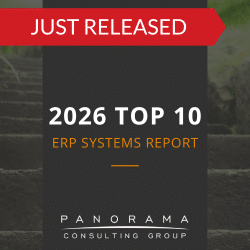Many organizations are hesitant to implement computerized maintenance management systems (CMMS) because they know these implementations can be prone to failure. While this solution can centralize your maintenance data and make operations more efficient, it isn’t always easy to adopt.
If you’re wondering why CMMS implementations fail, here are some lessons learned from past projects that you can apply to your own implementation.
Why CMMS Implementations Fail
1. Lack of Post-Purchase Vendor Support
When you’re researching vendors for your CMMS project, communication and support are plentiful. They want your business and are ready to prove why their solution is best.
However, it’s common for vendors to go silent once the software is implemented. While some might work with you right up until the point of purchase, they often leave maintenance teams stranded with little to no assistance during or after the actual installation.
Your departments will need support throughout the implementation, especially during the critical go-live time. Set expectations early on and choose a vendor that can follow through with them.
ERP Training Plan Success Story
We helped this manufacturer implement an ERP training strategy to increase user adoption of its new ERP system.
2. Poor User Adoption
You could successfully implement the best CMMS software program on the market. Yet, you could still experience failure. This is often due to a lack of user adoption.
There are a few reasons why users could resist adopting CMMS software. These include:
• Feeling left out of the software selection process
• Not understanding the CMMS technology
• Pushing back against the idea of new technology/workflows
To help alleviate some of these concerns, you should select software that’s intuitive and easy to navigate.
It’s also important to keep your teams in the loop throughout the implementation. The more they know about what’s to come, the less likely they are to resist it.
You should also invest in CMMS software training and prioritize communication. Communicate benefits of the solution and explain how it will improve workflows for the better. Keep communication consistent and clear, tailoring your message as necessary.
These are the basic elements of organizational change management (OCM). Any time you have a major change in your organization, OCM is an essential step and should be as high of a priority as the technology itself.
3. No Organizational Alignment
Achieving organizational alignment means that all your stakeholders are on the same page in terms of what they want from the CMMS system. These goals should accurately reflect your company’s vision, support its culture, and meet the needs of all employees.
To avoid conflict, make sure all levels of the company have a voice in the implementation, including all relevant department leaders. Allowing one group or individual to lead the charge can leave others feeling neglected, which breeds resentment.
While IT will have a major voice in the project, it shouldn’t be the only one you hear. It’s important to take a comprehensive, organizational-wide view of the effort to make sure all essential elements are included.
4. Under-Investing in Training
Even if end-user training is a part of your OCM strategy, it’s still possible to under-invest in this essential step.
Though most enterprise software is relatively user-friendly, you need to set aside time for your employees to become familiar with it. Otherwise, employees could be so intimidated by the range of new tools that they fail to use them at all.
This step is especially important if your team is transitioning from traditional, manual maintenance methods to a CMMS. If this is the case, take the time to assess how familiar your employees are with computer programs.
Then, plan your training approach accordingly. Some users may require more advanced training than others, especially those who aren’t currently required to use technology in their day-to-day roles.
Why CMMS Implementations Fail: Avoid These Risks
There’s not a one-size-fits-all reason for why CMMS implementations fail. Rather, it’s usually an accumulation of multiple small problems that snowball into bigger ones.
As early as possible, take time to plan the project by defining goals and ensuring alignment. You should also invest in training, prioritize OCM, and remain present for your teams.
Our enterprise software consultants can help you choose and implement a CMMS solution to transform your maintenance operation. Contact us below to learn more!














